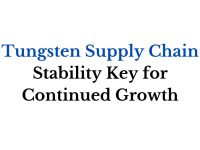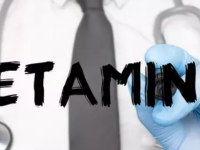For more than a year, India, like many other nations, has been dealing with the Covid-19 pandemic. India launched its “Cowin” vaccination program in January 2021 to immunize its massive population. However, even after India’s ability to undertake large-scale vaccination drives, there have been several obstacles and challenges that the Cowin campaign has faced in recent times. In this article, we’ll look at Cowin’s performance and see if Indians are getting vaccinated quickly enough. Furthermore Cowin portal has also been very effective for covid 19 certificate and Cowin certificate download as well.
The Current State of Vaccination in India:
As of March 15, 2023, approximately 90% of India’s adult population had received at least one dose of the Covid-19 vaccine. Furthermore, vaccination rates vary by state, with some states lagging behind others. The northeastern states of Nagaland, Meghalaya, and Manipur have the lowest vaccination rates in the country, with less than half of adults receiving at least one dose. On the other side, Kerala, Himachal Pradesh, and Goa have the highest vaccination rates, with over 95% of their adult population having gotten at least one shot.
Challenges Faced by Cowin:
Despite India’s experience with large-scale vaccination drives, the Cowin campaign has faced several challenges in recent years. A few challenges include:
Technical Glitches:
The Cowin app, which is used to schedule vaccination dates, has encountered many technological issues, making it impossible for individuals to register for vaccination. People have reported being unable to reserve spaces even after several attempts in certain circumstances.
Vaccine Shortages:
Several states have reported vaccine shortages, resulting in the temporary suspension of vaccination campaigns. This has caused doubt and fear among many who want to get vaccinated.
Misinformation:
Misinformation and rumors regarding vaccination safety and efficacy have also led to vaccine apprehension in various areas of the country. This has made it harder for health professionals to encourage individuals to get vaccinated.
Accessibility:
The Cowin campaign has experienced obstacles in reaching isolated and rural communities, where access to healthcare is restricted. As a result, vaccination rates in several of these regions have fallen.
Supply Chain Issues:
Vaccine distribution has also experienced many obstacles as a result of supply chain concerns. The storage and delivery of vaccinations need specific equipment and infrastructure, which has proven difficult in some regions of the country.
Cowin’s Performance: An Assessment
Notwithstanding Cowin’s struggles, India’s vaccination drive has made great headway in recent months. Almost 90% of India’s adult population has gotten at least one dose of the Covid-19 vaccination as of March 15, 2023. Given the size and variety of India’s people, this is a tremendous feat.
Cowin’s Reach:
One of the Cowin campaign’s primary assets has been its ability to reach a huge number of individuals across the country. Cowin has been able to reach even the most remote and rural locations using a mix of online registration, on-site vaccination stations, and door-to-door vaccination efforts.
Speed of Vaccination:
Cowin has also been effective in vaccinating individuals at a quick speed. India has been able to provide millions of doses of the vaccine per day, making it one of the world’s most rapid vaccination campaigns.
Innovation:
Cowin has also been inventive in its approach to vaccination. The government, for example, has introduced a “walk-in” vaccination campaign in which individuals may get vaccinated without making an appointment. This has made vaccination more accessible to individuals who may struggle to arrange appointments online.
Collaborations:
Cowin has also worked closely with numerous stakeholders, including state governments, healthcare personnel, and business sector groups, to guarantee the successful execution of the vaccination programs. This teamwork has aided Cowin in overcoming some of his obstacles.
Transparency:
The Cowin campaign has also been open and honest in its interactions with the public. Frequent updates and announcements have been made to keep people informed about the vaccination campaign’s progress, vaccine availability, and any changes to the vaccination policy.
The Role of the Private Sector in Cowin:
Private healthcare professionals’ involvement in the vaccination program has been crucial to the Cowin campaign. The private sector has been critical in broadening the scope of the vaccination campaign, particularly in outlying places where state healthcare services may not have been easily accessible. Furthermore, because the government has authorized private institutions to get vaccinations directly from manufacturers, they have played an important role in providing the vaccine to those over the age of 45.
Conclusion:
The Cowin campaign has made major strides toward vaccinating India’s large population. Notwithstanding the hurdles experienced by the campaign, Cowin has been effective in reaching a huge number of people, vaccinating them at a quick speed, and being inventive in its approach.
Yet, there is still a long way to go, notably in tackling vaccination hesitancy and ensuring fair delivery of vaccines across all states. To guarantee that Indians get vaccinated as soon as possible and the epidemic is brought under control, the government must continue to collaborate with stakeholders, communicate clearly with the public, and solve any issues that occur.



















